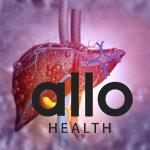Human Papillomavirus (HPV) Effective Treatment Options
"The following blog article provides general information and insights on various topics. However, it is important to note that the information presented is not intended as professional advice in any specific field or area. The content of this blog is for general educational and informational purposes only.
Book consultation
The content should not be interpreted as endorsement, recommendation, or guarantee of any product, service, or information mentioned. Readers are solely responsible for the decisions and actions they take based on the information provided in this blog. It is essential to exercise individual judgment, critical thinking, and personal responsibility when applying or implementing any information or suggestions discussed in the blog."
Human Papillomavirus (HPV) is a prevalent sexually transmitted infection (STI) with various strains, some of which can lead to genital warts, cervical dysplasia, and certain types of cancer. While HPV infection itself cannot be cured, effective treatment options are available to manage symptoms, reduce the risk of complications, and prevent transmission. In this comprehensive article, we delve into the diverse treatment modalities for HPV infection, including medical interventions, surgical procedures, and preventive measures aimed at promoting overall health and well-being.
Before discussing treatment options, it’s essential to understand the nature of HPV infection. HPV encompasses a large group of viruses, over 200 strains identified, with approximately 40 types primarily affecting the genital area. While some HPV strains cause benign conditions such as genital warts, others, notably high-risk types like HPV 16 and 18, are strongly linked to cervical, anal, and other cancers.
Medical Interventions
Topical Treatments for Genital Warts
- Description: Topical medications are commonly used to treat visible genital warts caused by low-risk HPV strains.
- Types: Common topical treatments include imiquimod cream, podophyllin resin, podofilox solution or gel, and trichloroacetic acid (TCA).
- Mechanism of Action: These medications work by destroying the wart tissue or stimulating the immune system to fight the virus.
- Application: Topical treatments are typically applied directly to the affected area and may require multiple applications over several weeks for optimal results.
Surgical Removal of Genital Warts
- Description: Surgical procedures may be necessary to remove genital warts that do not respond to topical treatments or are extensive in size or number.
- Types: Common surgical techniques include cryotherapy (freezing), electrocautery (burning), laser therapy, and surgical excision.
- Procedure: Surgical removal of genital warts is performed in a clinical setting under local anesthesia and involves the physical destruction or excision of the wart tissue.
- Recovery: Recovery time varies depending on the type and extent of the procedure but generally involves minimal discomfort and scarring.

Treatment for Cervical Dysplasia
Loop Electrosurgical Excision Procedure (LEEP)
- Description: LEEP is a surgical procedure used to remove abnormal cervical tissue (dysplasia) detected during Pap smears or HPV testing.
- Procedure: During LEEP, a thin wire loop heated by electrical current is used to excise the abnormal tissue from the cervix.
- Indications: LEEP is recommended for women with moderate to severe cervical dysplasia or persistent HPV infection that has not resolved spontaneously.
- Effectiveness: LEEP is highly effective in treating cervical dysplasia and reducing the risk of progression to cervical cancer when performed correctly.
Preventive Measures
HPV Vaccination
- Description: HPV vaccines are highly effective in preventing infection with the most common high-risk HPV strains (types 16 and 18) and certain low-risk strains (types 6 and 11) associated with genital warts.
- Types of Vaccines: Available HPV vaccines include Gardasil, Gardasil 9, and Cervarix, which provide protection against various HPV strains.
- Administration: HPV vaccines are administered as a series of injections over several months and are recommended for both males and females starting at age 9 or 11, with catch-up vaccination available for older individuals.
- Impact: HPV vaccination has been shown to significantly reduce the incidence of HPV-related conditions, including genital warts and cervical dysplasia, when administered before exposure to the virus.
Monitoring and Follow-Up
Regular Screening
- Description: Regular screening for cervical cancer and other HPV-related conditions is essential for early detection and intervention.
- Tests: Screening methods may include Pap smears, HPV DNA testing, or a combination of both, depending on age, risk factors, and guidelines.
- Frequency: Screening intervals vary depending on age, risk factors, and previous screening results but generally range from every three to five years for individuals at average risk.

Lifestyle Modifications
Smoking Cessation
- Description: Smoking is a known risk factor for HPV-related cancers, particularly cervical cancer, and can reduce the effectiveness of treatment.
- Benefits: Quitting smoking can improve treatment outcomes, reduce the risk of cancer recurrence, and enhance overall health and well-being.
- Support Services: Healthcare providers can offer smoking cessation resources and support to individuals diagnosed with HPV-related conditions to help them quit smoking and improve their prognosis.
Human Papillomavirus (HPV) infection presents a significant public health challenge, but effective treatment options are available to manage symptoms, reduce the risk of complications, and prevent transmission. Medical interventions such as topical treatments and surgical procedures can effectively treat genital warts and cervical dysplasia, while preventive measures such as HPV vaccination and regular screening play crucial roles in preventing HPV-related cancers and other associated conditions. Additionally, lifestyle modifications such as smoking cessation can further enhance treatment outcomes and promote overall health and well-being in individuals affected by HPV infection. By prioritizing comprehensive HPV prevention and treatment strategies, healthcare providers and individuals alike can work together to mitigate the impact of HPV on public health and improve outcomes for those affected by the virus.
Most Asked Questions
-
Are there any over-the-counter treatments available for genital warts caused by HPV?
While some over-the-counter treatments claim to treat genital warts caused by HPV, they may not be as effective or safe as prescription medications or medical procedures. It's essential to consult a healthcare provider for proper diagnosis and treatment of genital warts.
-
Can HPV-related cancers be treated effectively?
Treatment options for HPV-related cancers, such as cervical, anal, and oropharyngeal cancers, vary depending on the type and stage of cancer. Treatment modalities may include surgery, chemotherapy, radiation therapy, targeted therapy, or a combination of these approaches. Early detection and timely intervention are crucial for improving outcomes in HPV-related cancers.
-
Is there a cure for HPV infection?
While there is no cure for HPV infection, effective treatments are available to manage symptoms, reduce the risk of complications, and prevent transmission. Treatment options include topical medications for genital warts, surgical procedures for cervical dysplasia, HPV vaccination for prevention, and regular screening for early detection of HPV-related conditions.
-
How long does it take for HPV treatments to work?
The effectiveness and timeline of HPV treatments vary depending on the type and severity of the condition being treated, as well as individual factors such as immune response and treatment adherence. Topical treatments for genital warts may require several weeks to months to achieve complete resolution, while surgical procedures for cervical dysplasia or HPV-related cancers may have shorter or longer recovery periods.
-
Can HPV infection be prevented with treatment?
While HPV infection cannot be prevented with treatment, preventive measures such as HPV vaccination and regular screening can reduce the risk of HPV-related conditions, including genital warts, cervical dysplasia, and certain types of cancer. Early detection and timely intervention are essential for minimizing the impact of HPV on overall health and well-being.







































